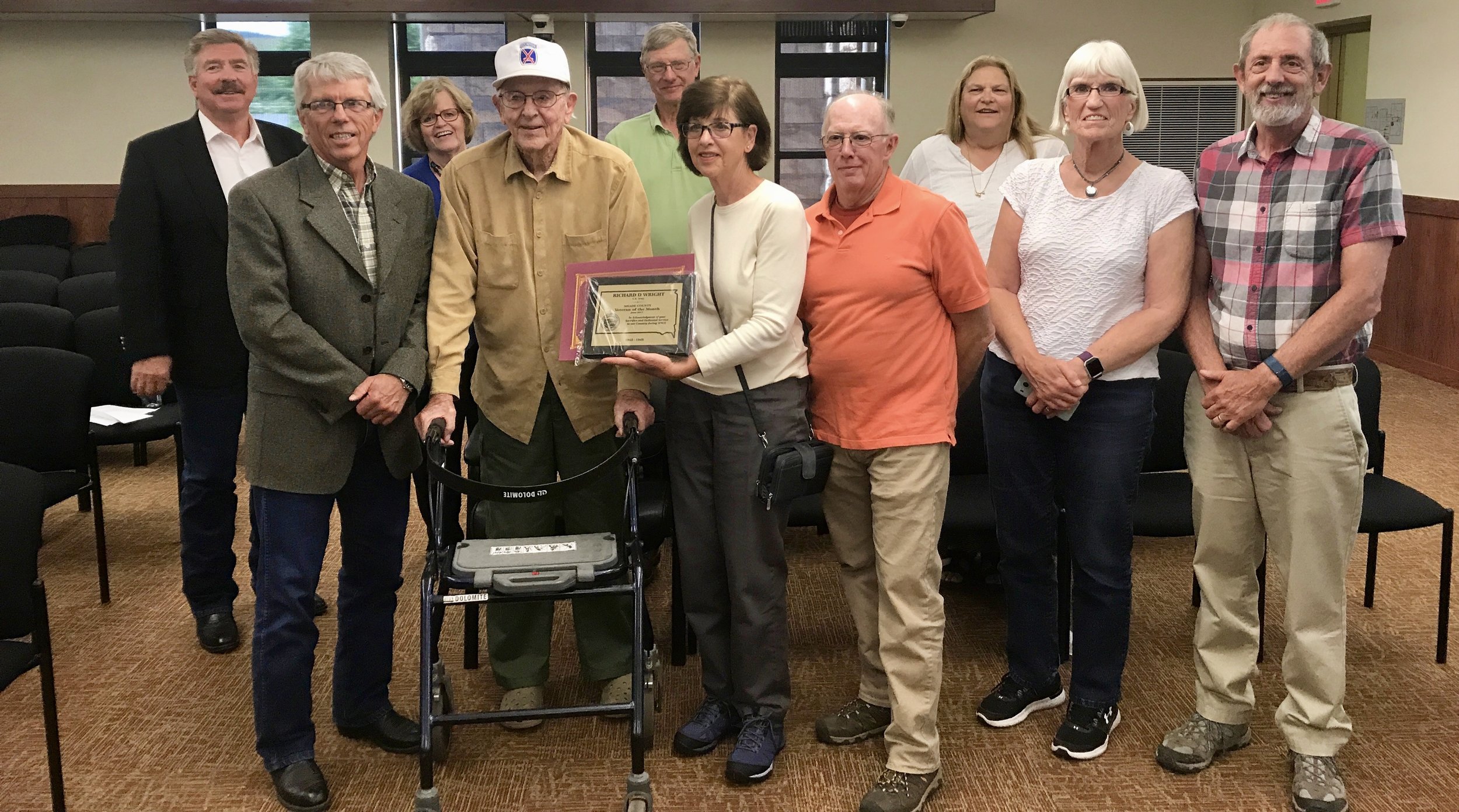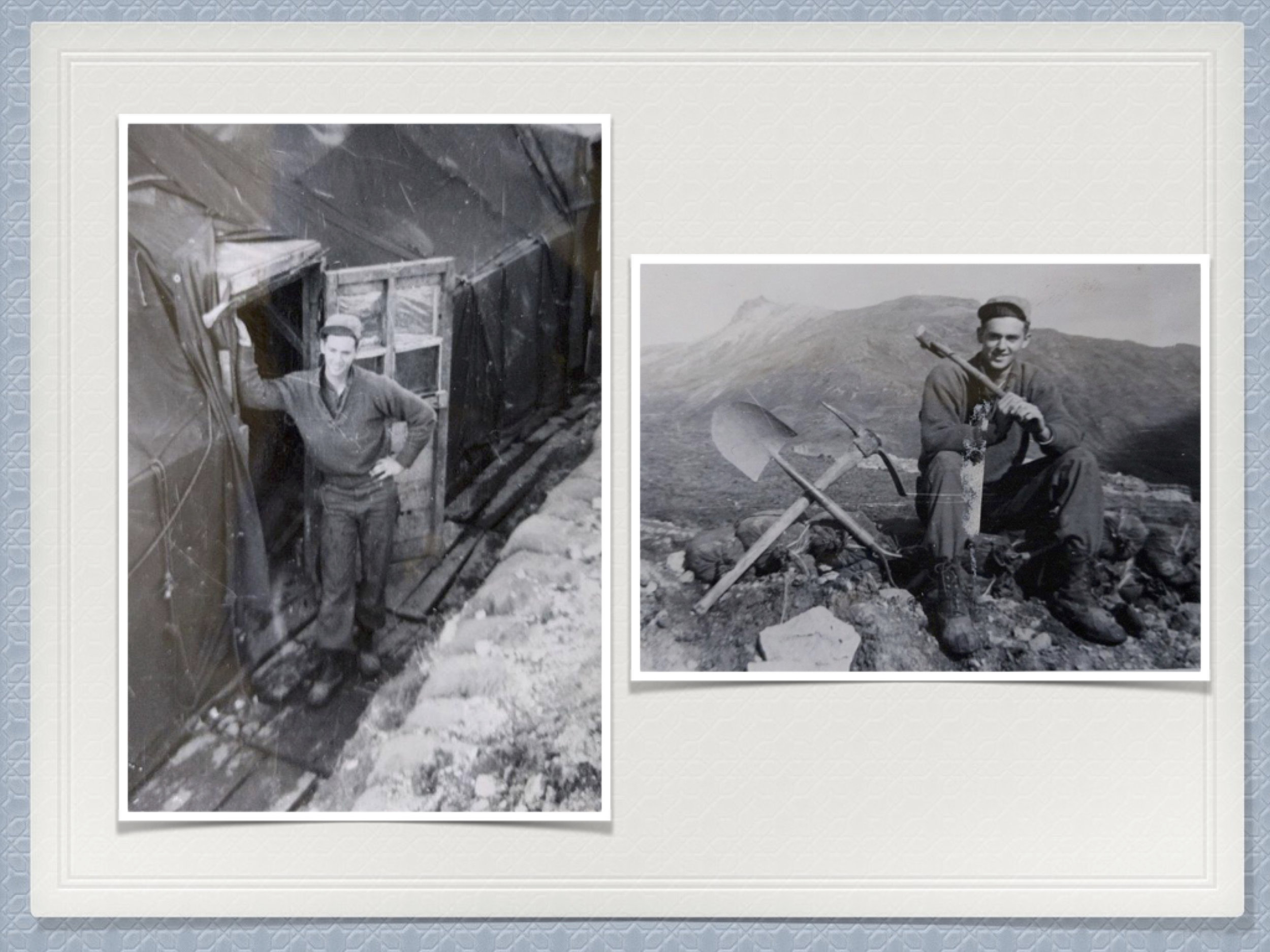Mr. Wright was born in Valentine, NE and raised in California. After high school Mr. Wright knew when the war started, he had to go. He didn't want to go into the regular Army, so he volunteered for the ski troops. He was accepted and that started his Army career.
Mr. Wright trained and worked in Washington, California, Colorado, Alaska, Texas, and the mountainous ranges in Europe.
Early on in his training Mr. Wright can remember the maneuvers at Jolon, California. “First night out I thought I had found a good place to sleep. In the morning I heard everybody going to mess, but I could not see anything! It seems I slept next to a poison oak bush. I was in such bad shape, I had to be taken to the hospital. It took almost a week before I was released. “
Another story Mr. Wright remembers takes place in August of 1943. They were going to hit the “beach” and there was only room for one landing craft at a time which meant the should expect heavy casualties. It was foggy and raining so the visibility was nil. They had about 100 feet of beach to cross, then a cliff to climb. Just as they reached the top they heard gunfire of to one side, so they were told to dig in and get ready for a Japanese attack. The ridge they were on was solid rock so they couldn’t dig a very deep foxhole. His buddy and he managed to dig a hole to fit one soldier. It soon filled up with water, but they took turns lying in ice cold water and tried to get a little rest. The gunfire stopped, but they could not see more than a few feet in front of them. They were sure that the Japanese were about ready to jump in their hole. As it turned out, the gunfire was from friendly troops. The Japanese left by submarine the day before they landed.
Early in World War II, the world heard about two heavily armored Russian divisions invading Finland, only to be crushed by Finnish troops on skis. The president of the National Ski Patrol in the U.S. convinced the War Department that the U.S. Army should work to develop a similar unit, and the Army created three mountain warfare divisions; training troops in rock climbing, skiing, and mountaineering. The division started out as an experiment to train skiers and climbers to fight in the most difficult, mountainous terrain. Their training began at Camp Hale, near Pando, Colorado included: skiing, snowshoeing and rock climbing. They also learned cold-weather survival tactics, such as keeping warm by building snow caves. The men lived in the mountains for weeks, working in altitudes of up to 13,500 feet, in five to six feet of snow and in temperatures that dropped to 20 degrees below zero at night. Only one, the 10th Mountain Division, saw combat in World War II. In four months, the division had one of the highest casualty rates of any in the war.
Mr. Wright said that we lost a lot of men. A lot of things happen, but I will only remember the ones that had some humor. We had a lot of enemy encounters and more climbing than skiing, but we accomplished our mission. Our unit was then sent to the Yugoslavia border to supervise the turning over of arms from the Yugoslavia army. What a laugh, no way were they going to comply with that. As we went forward, we spent a couple of weeks touring the little mountain villages in that area. From there we were shipped back to the states for discharge.
An interesting fact about the individuals from the 10th Mountain Division they were skiers and soldiers, trained to use their mountain skills in combat, and when they returned from war they helped build the American ski industry as we know it. In the postwar years, many veterans of the 10th returned to Colorado, Wyoming and Montana, and formed the foundation of the U.S. ski industry. They worked as ski instructors, ski school directors, Olympic and college coaches, and helped found resort areas in Colorado, such as Winter Park, Arapahoe Basin and Vale.
This is exactly what Mr. Wright did too. He married and moved to Aspen, Colorado where he was a ski instructor and contractor for 30 years. He retired to New Mexico where his son lives - before later moving to Piedmont, SD with his daughter.
Mr. Wright has 2 children, 2 grandchild and 1 great grandchild. His hobbies are skiing and mountain climbing.











